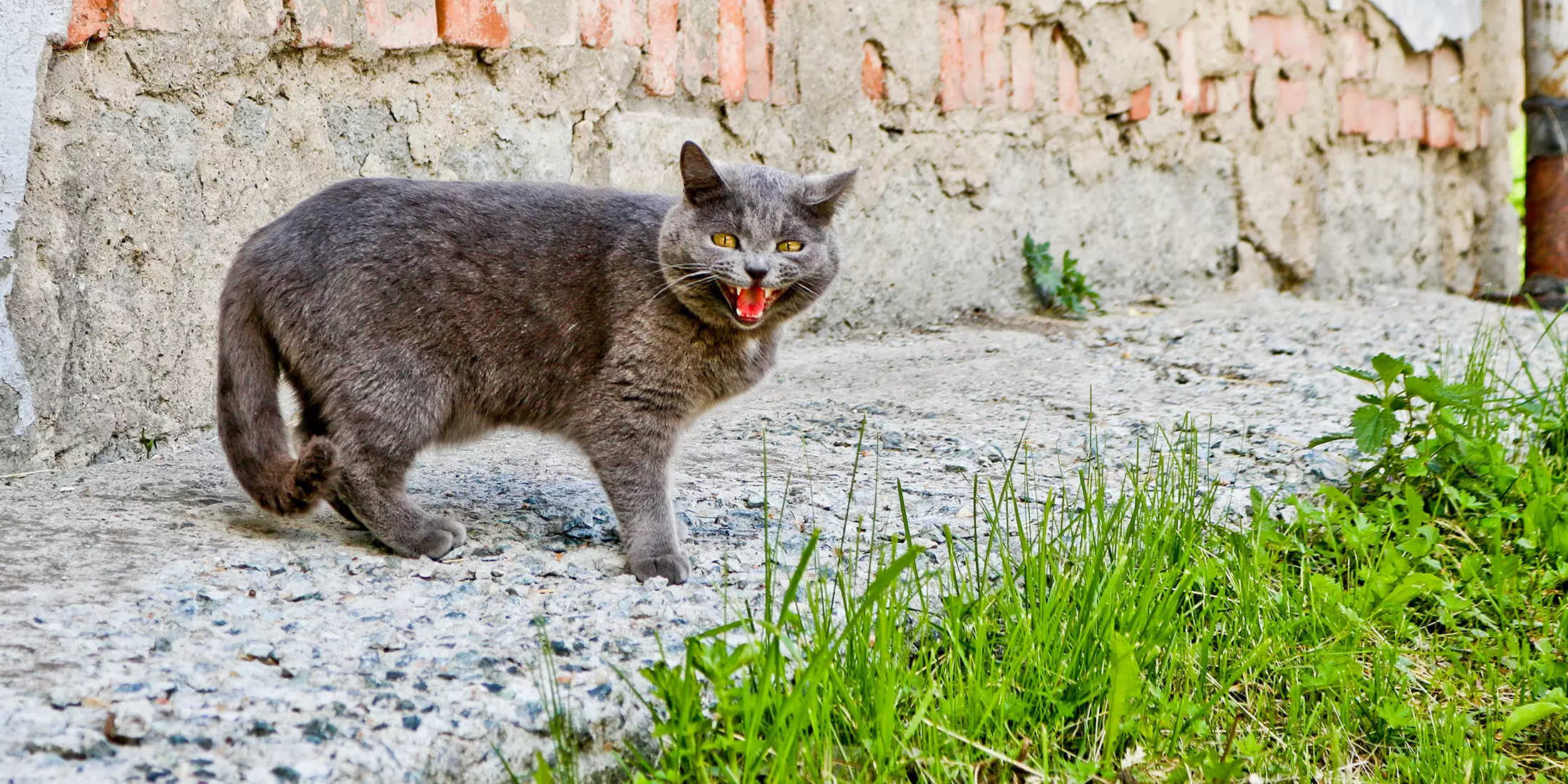Rabies in Cats
A common viral disease, rabies affects all warm-blooded animals, with the exception of a few species that are naturally resistant to it. The deadly virus spreads through the saliva of an infected animal when it bites a person or another animal. Prevent your kitty from coming into contact with wild animals to keep her safe from the deadly viral infection, which progresses quickly and turns fatal.
If an infected animal bites her, it is crucial to watch out for the signs of rabies in your cat. The feline community is highly vulnerable to rabies, which directly affects the cat’s central nervous system, according to the Centers for Disease Control.
The virus sits in the infected animal’s salivary gland, so that it can spread via the saliva. In the body of an infected cat, the virus replicates in muscle cells and quickly spreads via spinal fluid to nerve fibers and the central nervous system. The infection causes inflammation of the brain, putting excessive pressure on the skull. As a result of infection, your kitty begins to experience physical and behavioral changes.
The rabies virus progresses rapidly, though the incubation may take anywhere between one and three months.
Symptoms of Feline Rabies
Symptoms of rabies in cats vary from one stage to another, with cats behaving differently in each stage of the disease. If you suspect that your kitty may have contacted rabies, do not delay before taking her to the vet. Here are some of the common symptoms of rabies:
Prodromal Phase of Rabies in Cats
This is the first stage of feline rabies that lasts for one to three days. Since this is the first stage, symptoms may be hard to identify. However, symptoms of rabies in cats worsen rapidly. A kitty in the predromal phase of rabies can quickly turn from docile to dangerous. Here are some of the common symptoms:
- Erratic behavior
- Changes in temperament
- Fever spikes
- Loss of hunger/appetite
- Tendency to bite objects
- Seeking solitude
- Pupil dilation
- Itching at the bite site
Temperament changes are common in infected cats.
Furious Phase
Symptoms of the second stage may start to show up on the second or third day. As its name suggests, the Furious phase is one in which the kitty starts to show an increasingly erratic behavior with sudden temperament changes.
Some of the signs of rabies in cats in the furious phase include:
- Irritability
- Wandering around
- Overt aggression
- Hypersensitivity to environmental stimuli
- Attack behavior
- Growling
- Biting itself
- Disorientation
- Seizures/Trembling
- Fly biting
- Loss of muscle coordination
The health of the infected kitty worsens in this stage and the disease progresses to turn fatal.
Paralytic Phase
The final stage of rabies in cats, the dumb phase or paralytic stage is one in which the cat is in a depressive state. She is more or less unresponsive to any activity as the disease progresses. Other symptoms include:
- Choking
- Labored breathing
- Respiratory failure
- Disorientation
- Foaming at the mouth
- Confusion
- Extreme fatigue
- Immobility
- Coma
- Paralysis
- Death
Diagnosis of Rabies in Cats
If you suspect that your furry friend shows any of the feline rabies symptoms, it is important to get the diagnosis and prognosis done immediately, so that there is no delay in the quarantine process. Remember, one bite from your infected furry feline can transmit the fatal virus to you. Unfortunately, there is no cure for rabies. Be extra cautious of your interactions with an infected kitty.
Behavioral signs of furious rabies in cats are easier to recognize. A calm, friendly cat may suddenly exhibit signs of aggression, irritability, and anger.
On the other hand, signs of paralytic rabies are easier to spot when an otherwise normally active, playful kitty shows signs of lethargy, immobility, and paralysis. When the disease progresses, the cat’s lower jaw is inclined to hang open.
A vet will perform tests on the fluids of the skin, saliva, and brain. He may also need to perform urine tests on the animal. However, in the United States, rabies diagnosis is done using a post-mortem direct fluorescence antibody test in a state-approved lab. The veterinarian collects fluid samples if a kitty succumbs to her infection while in quarantine. The vet may also suggest euthanizing the feline if there are progressive signs of rabies, with no hope of cure.
Rabies in cats is fatal for unvaccinated animals, and progression of the disease is quick. An unvaccinated cat may die within 7 to 10 days.
Living With An Infected Cat
No doubt you love your kitty. However, an infected animal can turn aggressive and may try to attack you. It is important to disinfect any area where the cat’s saliva might have fallen with a household bleach solution. This is done to inactivate the virus. Make sure you or any other family member does not come into contact with the saliva. Even an accidental scratch by an infected kitty can expose your body to the rabies virus. If saliva enters your skin, you may be at a high risk of contracting the virus.
Vaccinations against rabies are an extremely crucial part of the cat health care regimen. When adopting a cat, have your kitty vaccinated against the rabies virus to ensure long-term protection against the deadly disease. It’s always better to be on the safer side and follow a schedule for periodic booster shots for your cat.
However, past incidents show that some cats despite their vaccinations are vulnerable to some strains of rabies virus. You must take your cat to the vet for preventative care whenever the kitty is bitten or scratched by any rabid animal or wildlife. Also, the first rabies vaccine takes about 28 days from the day of vaccination to fully immunize your cat, and you must take appropriate steps during this period to safeguard your pet from the infection.







